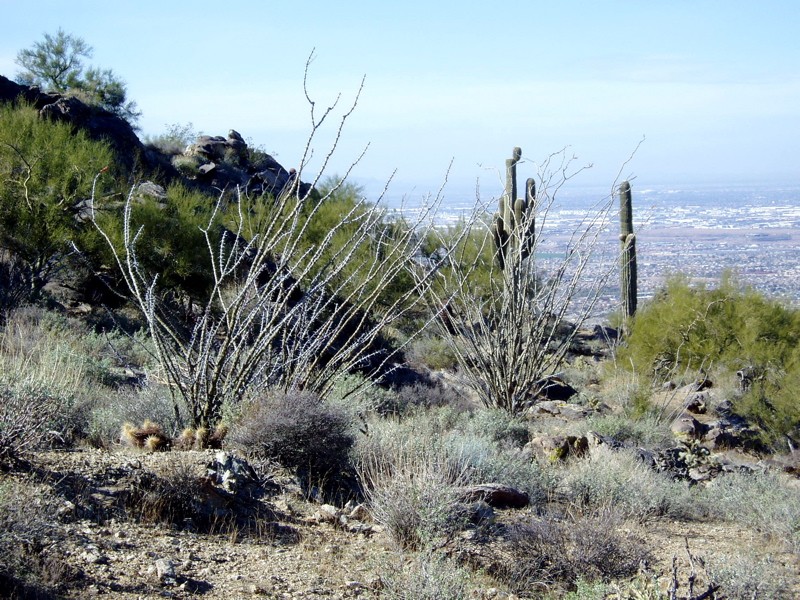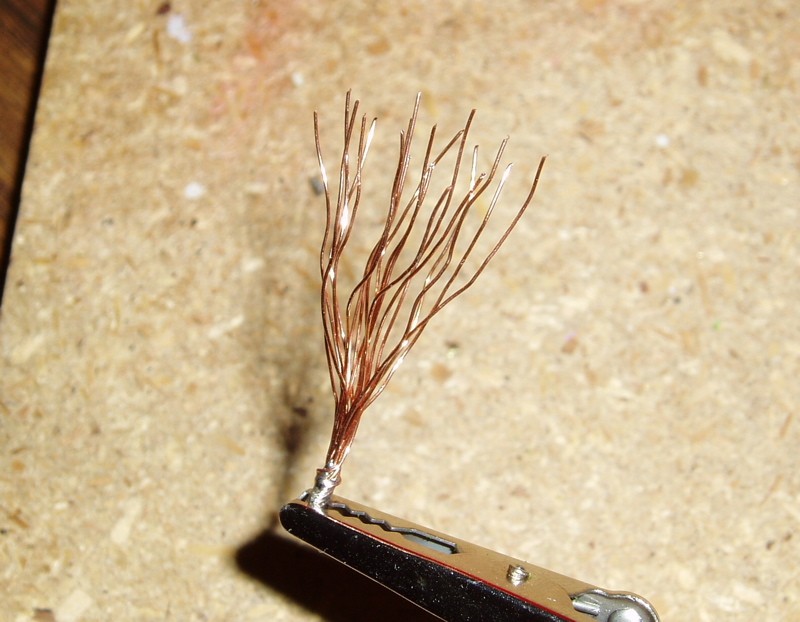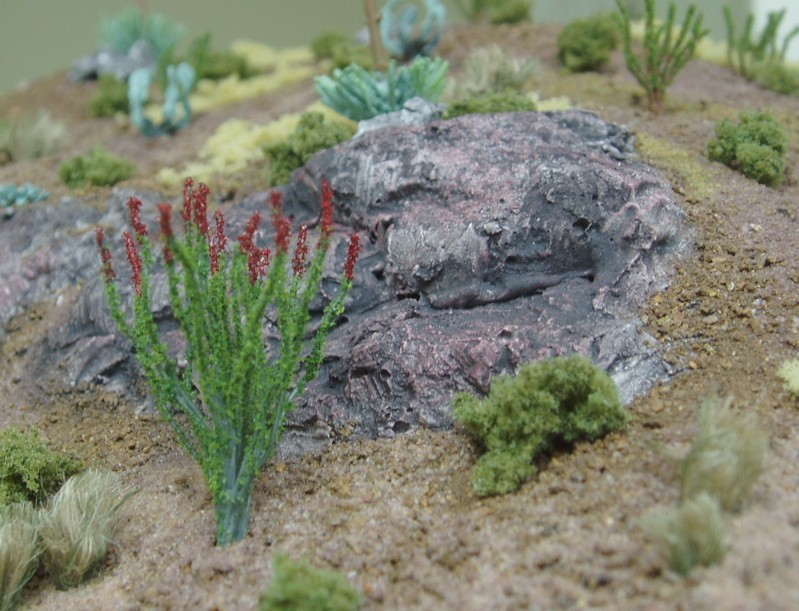Posts: 2,959
Threads: 158
Joined: Dec 2008
nkp_174 Wrote:Great thread and great results! When I get to scenery on my Oahu Railway (or rather, building some dioramas to test scenery!), I'll be doing this same sort of thing as there isn't too much out there for modeling tropical island scenery and I don't want to use natural materials either. Interestingly, portions of the Oahu Railway have a good deal in common with desert modeling...even cactus!
Walking the plastic flower aisle was a little weird, but a lot of fun. A actually found some weird ferny type thing that could work for palm tree fronds (unfortunately I do not need palm trees). They also had a few items for making dinosaur dioramas, and I seriously looked over those products. I've never been to Hawaii, but I anticipate you will face the same challenges. You need techniques that tell your viewers, THIS IS HAWAII, and not just another appalachian woodland. Architectural style can help with that, as you probably won't be able to make much use of the standard DPM or Walthers kits that most of us use.
--
Kevin
Check out my Shapeways creations!
3-d printed items in HO/HOn3 and more!
<!-- m --><a class="postlink" href="https://www.shapeways.com/shops/kevin-s-model-train-detail-parts">https://www.shapeways.com/shops/kevin-s ... tail-parts</a><!-- m -->
Posts: 2,724
Threads: 160
Joined: Dec 2008
My other car is a locomotive, ARHS restoration crew
Posts: 9,744
Threads: 233
Joined: Dec 2008
Kevin, those rate a 3 thumbs up. Where did you find the plastic plants. I went to Hobby Lobby today and did find a few useful items including some plastic Cream Heather. some snippers and some green paint and I have a bunch of presentable trees for my layout, and it was on sle for $3.50.
Posts: 2,959
Threads: 158
Joined: Dec 2008
Charlie, I got the plastic plants from Hobby Lobby and Micheals. I had to spend many minutes wandering the aisles and paying close attention to the plant textures to find what I wanted. Each store carried a different product line, so the experience was a bit of a treasure hunt.
--
Kevin
Check out my Shapeways creations!
3-d printed items in HO/HOn3 and more!
<!-- m --><a class="postlink" href="https://www.shapeways.com/shops/kevin-s-model-train-detail-parts">https://www.shapeways.com/shops/kevin-s ... tail-parts</a><!-- m -->
Posts: 1,229
Threads: 23
Joined: Dec 2008
Great looking plants, Kevin!
Our Michael's up here in WA (and our JoAnn's) both carry a nice range of artificial and natural dried & preserved plants. Most recently, wandering the store with my wife, I noticed the 'pot toppers' that have been mentioned here and elsewhere (even in MR!) and a new product that would pass for good forest floor in a wet, green place.
Since I model Appalachia I don't need a continuous thick green carpet in my forest, at least not all over, but a different look depending on elevation, rainshed, etc. So I'm still deciding what to go for. All that to say, you're dead-on about knowing your locale and how to say to the viewer, THIS IS _______. More layouts could benefit from a little scenic distinction, and yours is very distinctive indeed!
Galen
I may not be a rivet counter, but I sure do like rivets!
Posts: 9,744
Threads: 233
Joined: Dec 2008
nachoman Wrote:Charlie, I got the plastic plants from Hobby Lobby and Micheals. I had to spend many minutes wandering the aisles and paying close attention to the plant textures to find what I wanted. Each store carried a different product line, so the experience was a bit of a treasure hunt. Darn it, I drove right by Micheals
Charlie
Posts: 2,959
Threads: 158
Joined: Dec 2008
Up next is the bizarre Ocotillo plant. They aren't really a cactus, tree, bush, vine, or shrub, and that is what makes them so interesting. Common in southern Arizona, California, and New Mexico, they grow as a collection of thorny sticks from a Central base. During dry periods in the early summer and winter, the branches appear dead and gray. After a few rains, the branches turn a fuzzy green as numerous small green leaves sprout from the thorny sticks. Near the top of each branch, tubular red flowers bloom every spring, attracting hummingbirds. Here is a photo I took of a few Ocotillo plants last weekend:

And the wikipedia page for this species:
<!-- m --><a class="postlink" href="http://en.wikipedia.org/wiki/Fouquieria_splendens">http://en.wikipedia.org/wiki/Fouquieria_splendens</a><!-- m -->
This is perhaps my favorite plant because of its uniqueness. Ranchers also used to cut the branches, and plant them in rows to form fences. The branches would root themselves, and become a "living fence".
--
Kevin
Check out my Shapeways creations!
3-d printed items in HO/HOn3 and more!
<!-- m --><a class="postlink" href="https://www.shapeways.com/shops/kevin-s-model-train-detail-parts">https://www.shapeways.com/shops/kevin-s ... tail-parts</a><!-- m -->
Posts: 2,959
Threads: 158
Joined: Dec 2008
A found a piece of 14 gauge multiple-strand wire I bought at the auto parts store for an auto rewiring job. I stripped off about 14 scale feet of insulation, twisted the end and soldered it.

Then, I cut off the bundle of soldered wires, and cut the loose ends of the wires to staggered lengths. I then clamped the soldered end of the bundle and fanned out the branches, kinking and twisting them a little to give a more natural appearance.

I then painted the branches using dark gray craft paint and a brush. Making a bunch of these at one time and spraying the paint would probably be easier.

--
Kevin
Check out my Shapeways creations!
3-d printed items in HO/HOn3 and more!
<!-- m --><a class="postlink" href="https://www.shapeways.com/shops/kevin-s-model-train-detail-parts">https://www.shapeways.com/shops/kevin-s ... tail-parts</a><!-- m -->
Posts: 2,959
Threads: 158
Joined: Dec 2008
After the paint dried, I painted the branches with Acrylic Matte Medium using a soft bristle brush. It may help if the Matte Medium is thinned a little. While the Matte Medium was still wet, I sprinkled on some fine, green ground foam to represent the leaves. I took a pinch of ground foam between my fingers of one hand, held the armature horizontal with my other hand, and sprinkled on ground foam by rubbing my fingers back and forth while rotating the armature in order to apply a fine, even layer.

I decided to give this plant blooms, so I painted the ends of the branches with Floquil Caboose red...

...and planted it on my layout.

If you want to model an Ocotillo without leaves, I would make the same wire armature, and try spraying with some kind of gray speckled spray paint, or maybe sprinkle on brown ground foam instead of green.
--
Kevin
Check out my Shapeways creations!
3-d printed items in HO/HOn3 and more!
<!-- m --><a class="postlink" href="https://www.shapeways.com/shops/kevin-s-model-train-detail-parts">https://www.shapeways.com/shops/kevin-s ... tail-parts</a><!-- m -->
Posts: 9,744
Threads: 233
Joined: Dec 2008
Kevin, this thread is a great tutorial, it needs placed in the accademy. I'm sending the link to a friend that models the southwest.
Charlie
Posts: 4,161
Threads: 174
Joined: Dec 2008
 No kidding! Simple but creative techniques with readily available materials that create outstanding results!
Ralph
Posts: 454
Threads: 18
Joined: Sep 2010
Wow, that came out great. WHo'da thunk it started life as a piece of stranded copper wire.
--Randy
Posts: 5,859
Threads: 175
Joined: Dec 2008
Very impressive modelling, Kevin, and an imaginative use of materials - a quantum leap from the old standby pipe-cleaner saguaro cacti.  Thanks, too, for the botany lesson - living in an area of deciduous forests, I was only vaguely aware of the variety present in the southwestern deserts.
Wayne
Posts: 2,271
Threads: 155
Joined: Dec 2008
Charlie B Wrote:Kevin, this thread is a great tutorial, it needs placed in the accademy. I'm sending the link to a friend that models the southwest.
Charlie
Kevin,
If you let me know when you are finished adding to this great "how-to", I'll move it over to The Academy as per Charlie's suggestion.
Andrew
Posts: 4,553
Threads: 100
Joined: Dec 2008
If these plants grew in the Northeast, I'd have to model a bunch of them !!!
I just might have to do a small diorama.
Andrew, I concur heartily with moving this thread, once completed,to the academy. This is really innovative creativity, and the step-by-step explanation makes the thread a valuable source for Southwestern modelers.
We always learn far more from our own mistakes, than we will ever learn from another's advice.
The greatest place to live life, is on the sharp leading edge of a learning curve.
Lead me not into temptation.....I can find it myself!
|






 Thanks, too, for the botany lesson - living in an area of deciduous forests, I was only vaguely aware of the variety present in the southwestern deserts.
Thanks, too, for the botany lesson - living in an area of deciduous forests, I was only vaguely aware of the variety present in the southwestern deserts.